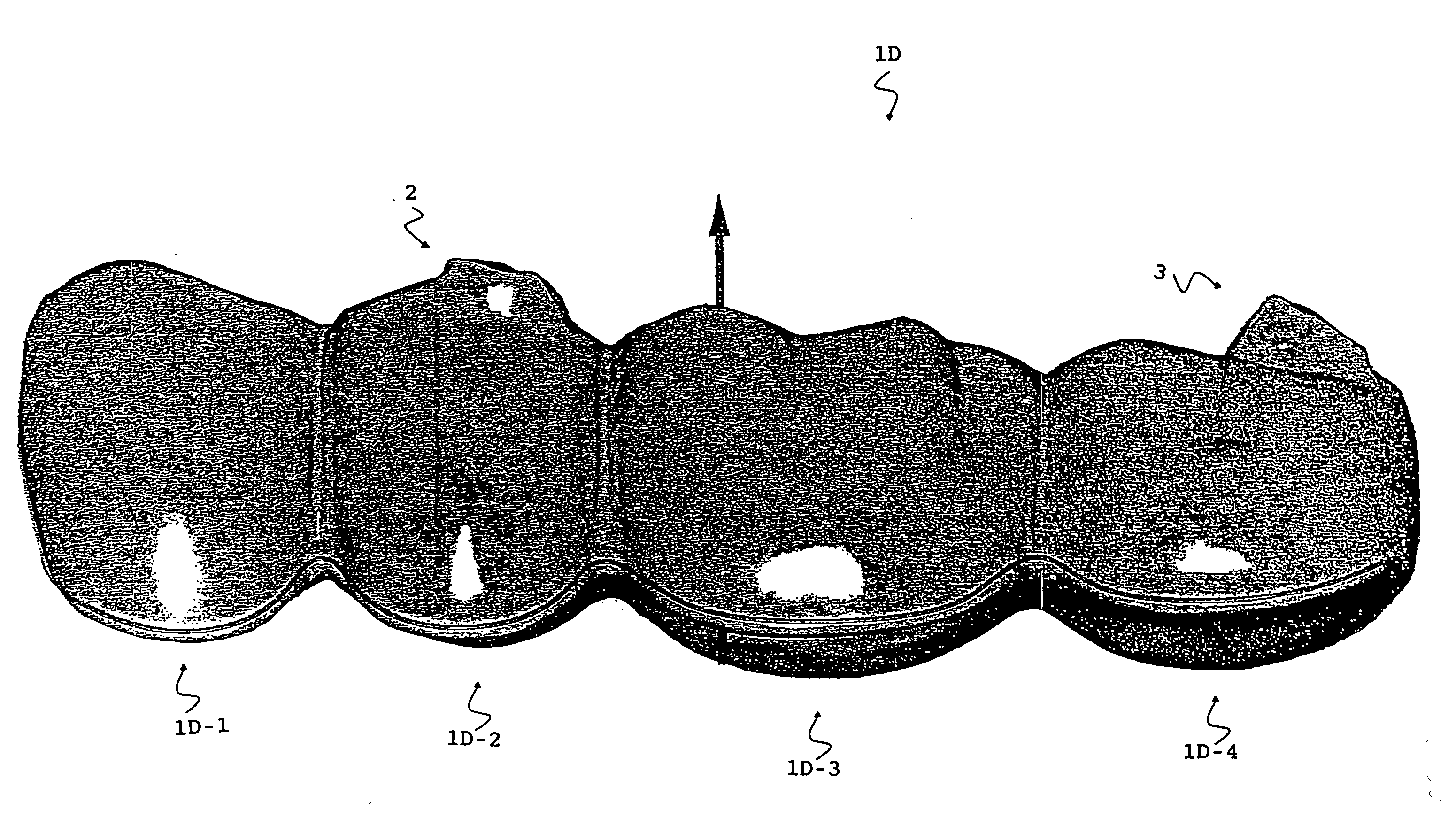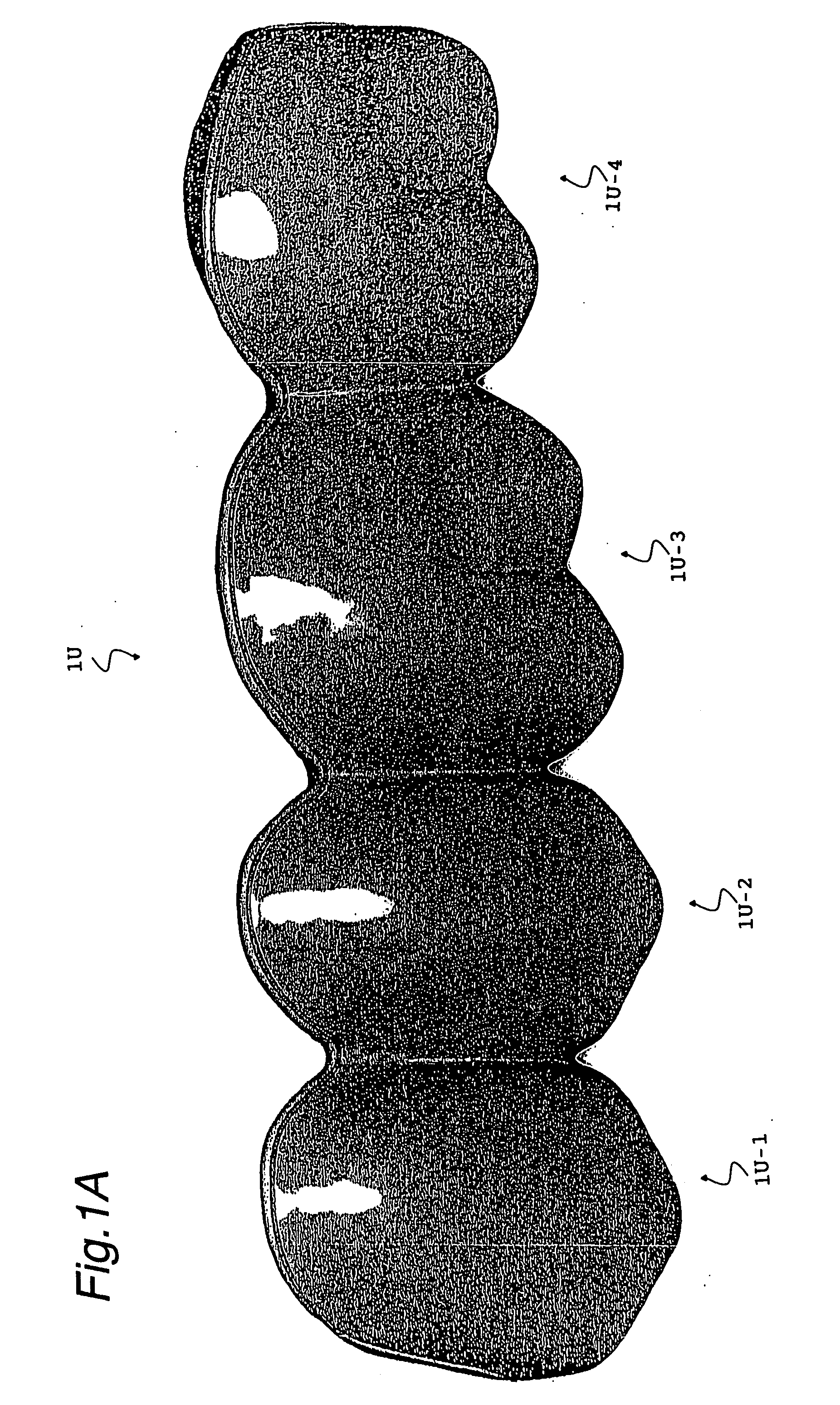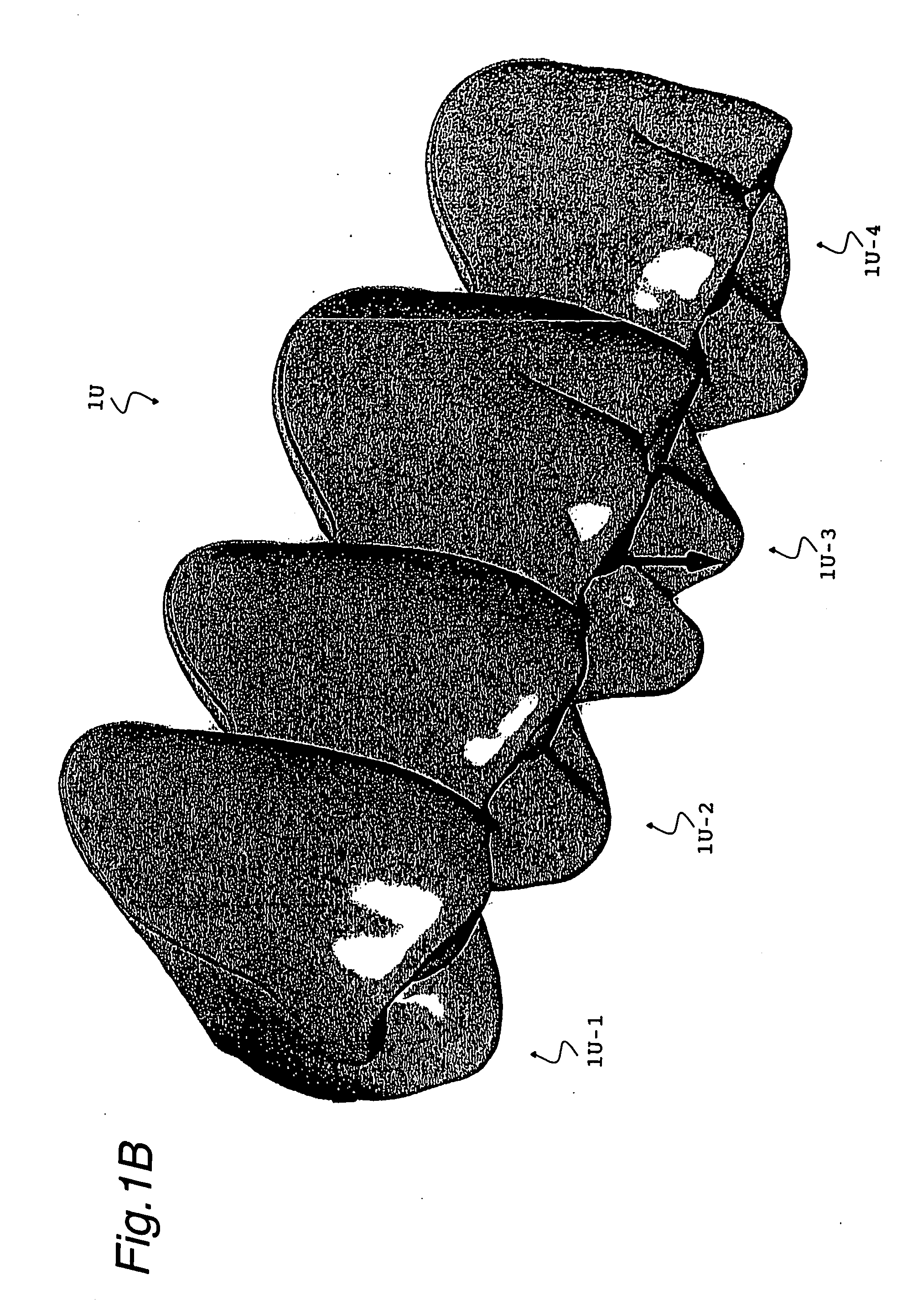An artificial tooth, a jig for arranging the same, an arrangment method of the same and a denture
a technology of artificial teeth and arrangments, applied in the field of artificial teeth, can solve the problems of difficult to accurately create gaps, insufficient baseplate performance, complicated and time-consuming work of arranging artificial teeth in the molar segment in the conventional manner as described above, etc., and achieve the effect of short time and easy fitting
- Summary
- Abstract
- Description
- Claims
- Application Information
AI Technical Summary
Benefits of technology
Problems solved by technology
Method used
Image
Examples
Embodiment Construction
Embodiment of Dental Prosthesis of Four Interconnected Artificial Molars
[0050]FIGS. 1A and 1B show, respectively, a dental prosthesis of four interconnected artificial maxillary molars, “1U”, designed for the lingualized occlusion according to an embodiment of the present invention. The dental prosthesis of artificial maxillary molars 1U is made of hard resin, for example, and comprises a first premolar 1U-1, a second premolar 1U-2, a third molar 1U-3 and a fourth molar 1U-4, which are securely interconnected to form the dental prosthesis. It will be appreciated that each of these artificial molars has been arranged such that a mesio-distal position, a bucco-lingual position, a vertical position, a mesio-distal axis of tooth, a bucco-lingual axis of tooth and a degree of torsiversion are in conformity with the aesthetic standard as well as in complying with the general principle of occlusal contact manner in each specific tooth.
[0051] Referring to FIGS. 2A to 2D, there is shown a...
PUM
 Login to View More
Login to View More Abstract
Description
Claims
Application Information
 Login to View More
Login to View More - R&D
- Intellectual Property
- Life Sciences
- Materials
- Tech Scout
- Unparalleled Data Quality
- Higher Quality Content
- 60% Fewer Hallucinations
Browse by: Latest US Patents, China's latest patents, Technical Efficacy Thesaurus, Application Domain, Technology Topic, Popular Technical Reports.
© 2025 PatSnap. All rights reserved.Legal|Privacy policy|Modern Slavery Act Transparency Statement|Sitemap|About US| Contact US: help@patsnap.com



